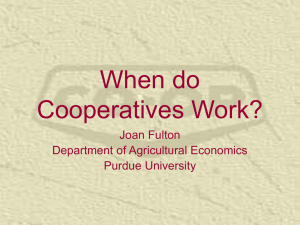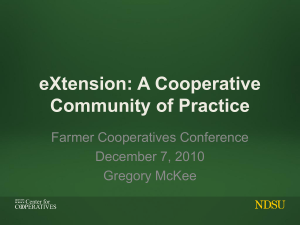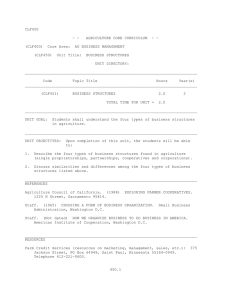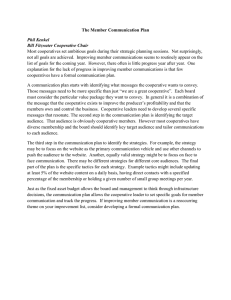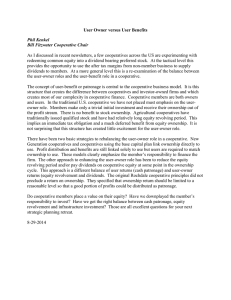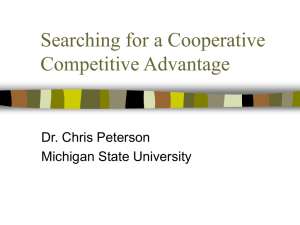Challenges of User-Owned Firms Phil Kenkel Bill Fitzwater Cooperative Chai
advertisement
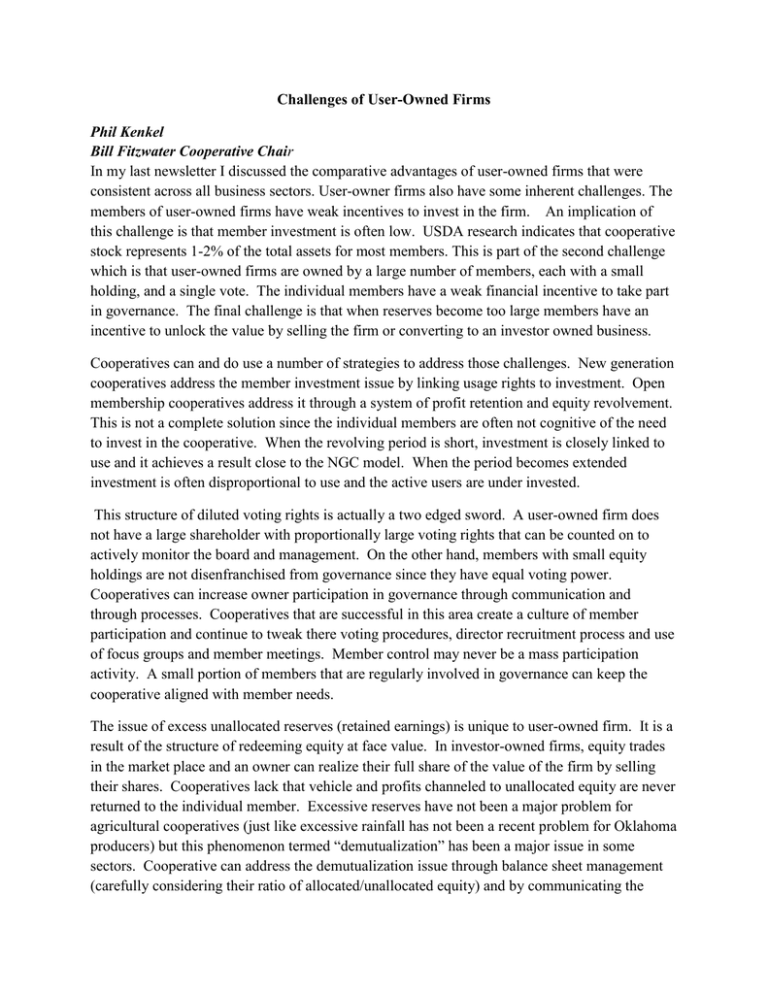
Challenges of User-Owned Firms Phil Kenkel Bill Fitzwater Cooperative Chair In my last newsletter I discussed the comparative advantages of user-owned firms that were consistent across all business sectors. User-owner firms also have some inherent challenges. The members of user-owned firms have weak incentives to invest in the firm. An implication of this challenge is that member investment is often low. USDA research indicates that cooperative stock represents 1-2% of the total assets for most members. This is part of the second challenge which is that user-owned firms are owned by a large number of members, each with a small holding, and a single vote. The individual members have a weak financial incentive to take part in governance. The final challenge is that when reserves become too large members have an incentive to unlock the value by selling the firm or converting to an investor owned business. Cooperatives can and do use a number of strategies to address those challenges. New generation cooperatives address the member investment issue by linking usage rights to investment. Open membership cooperatives address it through a system of profit retention and equity revolvement. This is not a complete solution since the individual members are often not cognitive of the need to invest in the cooperative. When the revolving period is short, investment is closely linked to use and it achieves a result close to the NGC model. When the period becomes extended investment is often disproportional to use and the active users are under invested. This structure of diluted voting rights is actually a two edged sword. A user-owned firm does not have a large shareholder with proportionally large voting rights that can be counted on to actively monitor the board and management. On the other hand, members with small equity holdings are not disenfranchised from governance since they have equal voting power. Cooperatives can increase owner participation in governance through communication and through processes. Cooperatives that are successful in this area create a culture of member participation and continue to tweak there voting procedures, director recruitment process and use of focus groups and member meetings. Member control may never be a mass participation activity. A small portion of members that are regularly involved in governance can keep the cooperative aligned with member needs. The issue of excess unallocated reserves (retained earnings) is unique to user-owned firm. It is a result of the structure of redeeming equity at face value. In investor-owned firms, equity trades in the market place and an owner can realize their full share of the value of the firm by selling their shares. Cooperatives lack that vehicle and profits channeled to unallocated equity are never returned to the individual member. Excessive reserves have not been a major problem for agricultural cooperatives (just like excessive rainfall has not been a recent problem for Oklahoma producers) but this phenomenon termed “demutualization” has been a major issue in some sectors. Cooperative can address the demutualization issue through balance sheet management (carefully considering their ratio of allocated/unallocated equity) and by communicating the member’s value in having access to the cooperative’s infrastructure. Remind your members that the cooperative is worth more alive than dead and/or manage your equity so that the question does not arise. The advantages of the cooperative business form outweigh the challenges. We need to continue to communicate our advantages and make decisions which offset our challenges. 12-12-12
